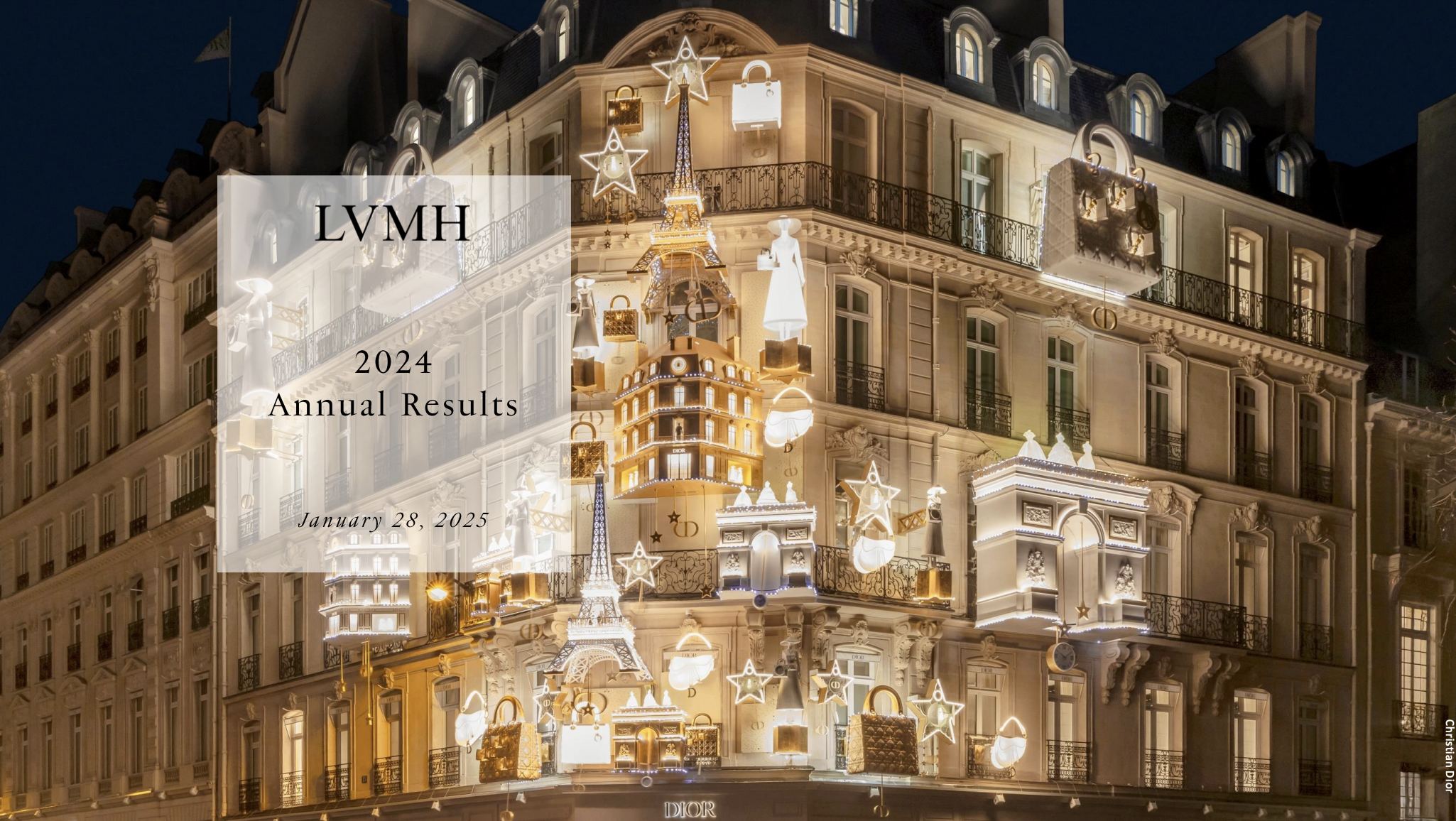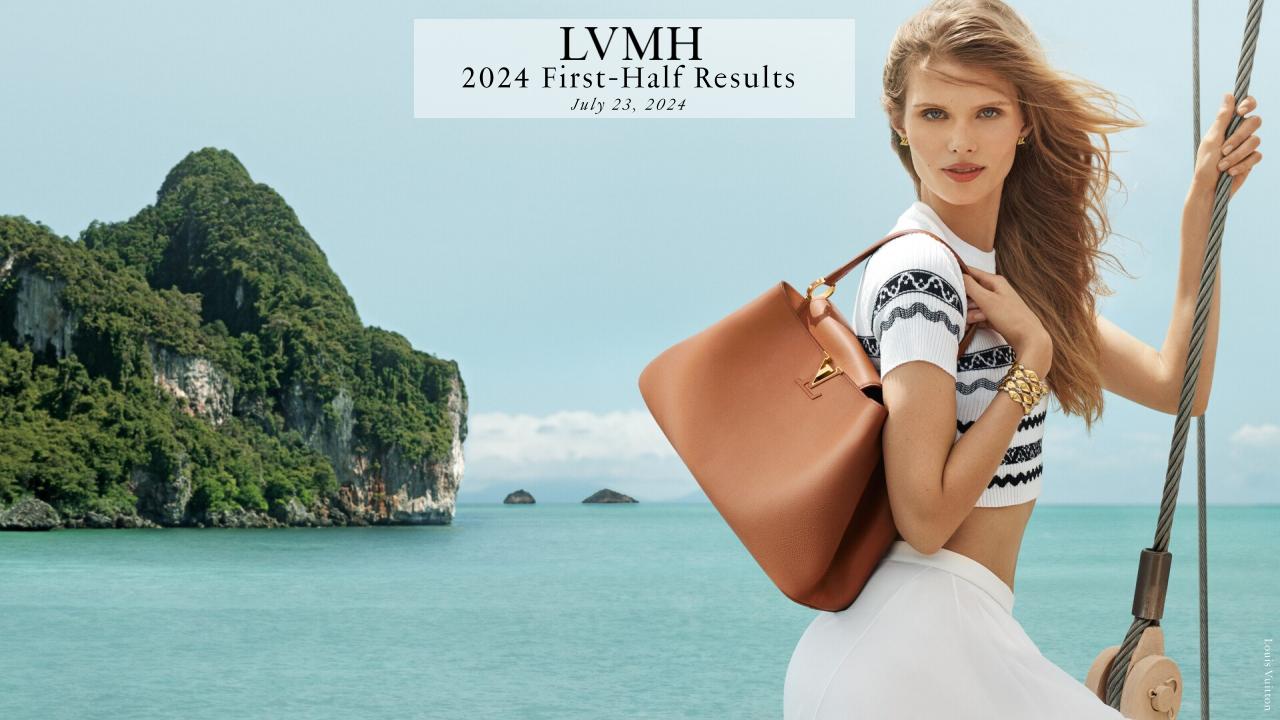After the Paris stock market closed on October 15, French luxury giant LVMH (Moët Hennessy Louis Vuitton) released its key performance report for the third quarter of 2024 and the first nine months of the year. The group’s sales revenue for the first nine months decreased by 2% year-on-year to €60.8 billion, remaining flat on an organic basis compared to the same period last year. (*Organic basis refers to figures adjusted for consistent consolidation scope and currency effects, with consolidation changes affecting LVMH’s first nine months by -1% and exchange rate changes impacting by -2%.)
In the third quarter, on an organic basis, sales revenue declined by 3% year-on-year to €19 billion, primarily due to a slowdown in Japanese growth as the yen strengthened. The first and second quarters had achieved organic growth of 3% and 1%, respectively. A review of historical financial data by Luxe.CO shows this is the first organic decline in LVMH’s sales revenue since Q4 2020.

LVMH stated that after several years of exceptional post-Covid growth, the group’s performance remained stable despite the current challenging environment and high comparison base from the same period last year. In the context of uncertain economic and geopolitical conditions, the group remains confident and will continue to focus on enhancing brand appeal, leveraging product authenticity, quality, outstanding distribution, and agile organization. LVMH intends to use its strong brand portfolio and talented teams to further cement its global leadership in luxury goods in 2024.
During a conference call following the earnings release, Deputy Chief Financial Officer Cécile Cabanis noted two contrasting demand trends. On one hand, demand from Chinese consumers remained quite active in the first half of the year. However, they are now facing increasingly severe macroeconomic headwinds, which have clearly affected their confidence and put pressure on disposable income. On the other hand, demand from Western consumers has shown gradual improvement, though the pace is slow due to persistently high inflation and interest rates.
“In short, the net effect of these two trends was slightly positive in the first half, turning slightly negative in the third quarter. This kept organic revenue growth flat for the first nine months, which demonstrates a certain level of resilience considering the unfavorable demand environment,” she explained.
Chief Financial Officer Jean-Jacques Guiony added that most of their markets, including the Chinese Mainland, are currently facing economic challenges, so the soft demand for luxury goods is not surprising, especially considering they still achieved double-digit growth in the second half of last year. He further explained that consumer confidence in the Chinese Mainland has returned to the historical low seen during the pandemic, so it’s unrealistic to expect disposable income to increase. However, the strong performance in the first half of the year once again demonstrated the enduring desire of Chinese consumers for luxury goods, giving them confidence that demand will rebound once consumer confidence returns. “Clearly, we won’t be standing still.”
“What can we do in such a situation?” he posed. “First, we emphasize product innovation. It may not be the easiest growth driver, but it’s one of the most impactful. Over the years, we’ve proven our ability to harness creative talent and translate it into commercial success. As CFO, I must highlight that it’s also one of the most cost-effective growth drivers. Second, we have continuously invested in distribution networks and communication in recent years. While we need to continue doing this, there’s no need to accelerate. So, although we’re reluctant to make cost control predictions that might overemphasize results and hinder actual performance, we can adjust costs based on what we observe, just as we’ve done many times in the past.”

Market Performance
By market, for the first nine months, Europe and the U.S. posted slight organic growth (+3% and +1%, respectively), while Japan continued to achieve double-digit growth (+36%). The decline in other parts of Asia (-12%) mainly reflects strong growth in Chinese consumer spending in Europe and Japan. Despite being the only region with a decline, Asia remains the group’s largest market, accounting for 29% of sales revenue.
Chart: Organic sales revenue change by region for Q1-Q3 2024 (compared to the same period in 2023).

Chart: Sales revenue by business division for the first nine months of 2024 compared to 2023.

Wines and Spirits Division
On an organic basis, sales revenue for the first nine months declined by 8% year-on-year.

Champagne prices fell, reflecting the continued normalization of demand post-pandemic, though they remain far above 2019 levels. Hennessy Cognac was affected by weak demand in China, while in the U.S., despite a cautious overall atmosphere, sales volumes grew in the second quarter.
In the red wine sector of Provence, Château d’Esclans accelerated its international expansion. During this period, Moët Hennessy partnered with American pop star Beyoncé to launch the U.S. whiskey brand SirDavis (see link for more details). Additionally, the company announced a strategic partnership with French Bloom, a leader in the premium non-alcoholic sparkling wine market.

Fashion and Leather Goods Division
On an organic basis, sales revenue for the first nine months declined by 1% year-on-year. The division demonstrated good resilience and gained market share.

This summer, both Louis Vuitton and Christian Dior were in the spotlight due to their association with the Paris 2024 Olympic and Paralympic Games.
Louis Vuitton garnered attention once again for its innovation in the travel sector, launching numerous new leather goods products. In addition to designing medal and torch cases for the 2024 Paris Olympics, Louis Vuitton was the title partner for the 37th America’s Cup this year.
Christian Dior continued to showcase exceptional creativity, as evident in the latest Miss Dior collection. The L’Or de Dior exhibition, held at the Guardian Art Center in Beijing, underscored the brand’s close connection with China through the prism of art.
Loro Piana, Loewe, and Rimowa also confirmed their strong growth momentum. The group welcomed two new creative directors: Michael Rider at Celine and Sarah Burton at Givenchy.

Perfumes and Cosmetics Division
On an organic basis, sales revenue grew by 5% year-on-year in the first nine months, driven by a strong innovation strategy and highly selective distribution.

Christian Dior performed remarkably well, with Sauvage continuing its steady growth, consolidating its position as the world’s leading fragrance. Rihanna was named the new face of the iconic women’s perfume J’adore, and the new Miss Dior fragrance achieved great success.
Cosmetics and high-end skincare also contributed to the strong performance. Guerlain maintained robust momentum in its fragrance business, particularly with new additions to the L’Art & La Matière collection and the Aqua Allegoria line, which saw the launch of the new Florabloom fragrance. Givenchy continued to grow, thanks to its new L’Interdit Absolu fragrance. Fenty Beauty launched a new line of hair care products and expanded its retail presence in China.

Watches and Jewelry Division
On an organic basis, sales revenue declined by 3% year-on-year for the first nine months.

Tiffany continued to showcase its iconic collections through its global With Love, Since 1837 campaign. The Tiffany Titan collection, designed by Louis Vuitton Men’s Creative Director Pharrell Williams, was a great success. The brand also continued the successful rollout of its new store concept in key markets.
Bulgari celebrated its 140th anniversary with Zendaya, Anne Hathaway, and Yifei, who attended its Eternally Reborn brand event. The celebration included the launch of a new jewelry collection, Bulgari Tubogas, a bold, timeless reinterpretation inspired by icons from the 1940s.
Chaumet gained significant recognition this summer for designing the medals for the Paris 2024 Olympic and Paralympic Games.
A major highlight for LVMH was the announcement of a 10-year global partnership with Formula 1, starting in 2025. Several of LVMH’s iconic brands—especially Louis Vuitton, Moët Hennessy, and TAG Heuer—will participate in this initiative.

Selective Retailing Division
On an organic basis, sales revenue grew by 6% year-on-year for the first nine months.

Sephora performed strongly, continuing to gain market share in North America, Europe, and the Middle East. DFS‘s business activities remained below pre-pandemic levels, with notable differences in tourist flows between destinations.
Le Bon Marché luxury department store continued to grow, driven by a differentiation strategy that includes an ever-evolving product and service offering and unique event programming.

|Source: Official financial report
|Image Credit: Official website
|Editor: Wang Jiaqi



